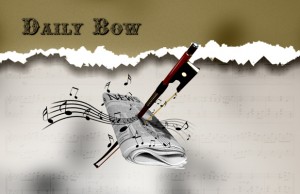Period Instrument Performance: The American Classical Orchestra of Alice Tully
It’s a well known fact among string players that instruments were very different back in the day. Strings were made from cat gut instead of synthetic metal cores; fingerboards were shorter and bridges were cut with less curve; and bows were convex rather than concave like a hunter’s bow. Earlier in the twentieth century, when period performance practice was just getting started, there was a huge difference between how and these performers played music of the 17th and 18th centuries compared to the famous ensembles of the day.
Back then, it was more in vogue to play “Haydn like Bruckner, or Mendelssohn with Mahlerian muscle,” as Zachary Woolfe mentions in his review of the American Classical Orchestra’s season opening concert this week. But today, as he continues, that isn’t necessarily the case, even with the big symphony orchestras. Period performance practice, at least on the level of interpretation and technical approach, has become much more standardized in over the years. Now in the 21st century, it’s rather commonplace to hear an orchestra like the Chicago Symphony play Haydn with sparring vibrato, more use of open strings, and tempo and dynamic decisions based on treatises written during the time of the composition.
So where then, does an ensemble like the American Classical Orchestra fit into the concert scene. If historically informed performance practices are more common now, are they really as relevant as they might have been before? Here’s what Woolfe had to say:
Haydn now pretty consistently sounds like Haydn, and apart from the low buzz of the period cellos and the mellower woodwinds and brasses, Monday’s performance of the Symphony No. 103 (“Drumroll”) was pleasantly typical.
While he always points out some advantages of the ensemble, particularly in the woodwind and brass sections, where the different materials out of which the instruments are made affect their sections as a section significantly. But these instruments are also somewhat more difficult to perform on, and as Woolfe notes, there was a lack in some parts of the performance due to errors.
At the same time, however, can we really trust the major orchestras to give a genuinely researched account of baroque and classical period compositions? While visiting specialist conductors may give the ensemble’s some very good pointers, these people are not always there to ensure the orchestra really plays Locatelli like Locatelli would have heard it. What do you think? Is there still an irreplaceable value to ensembles like the American Classical Orchestra? Or will trends continue and historically informed performance will become the norm at any Haydn performance? Comment below!















No comments yet.